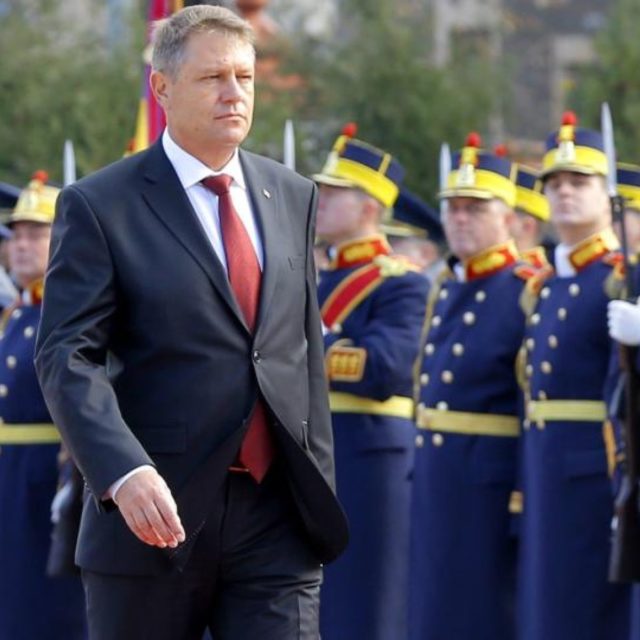
Romania’s New National Defense Strategy Irks Kremlin (Part One)
Publication: Eurasia Daily Monitor Volume: 17 Issue: 87
By:

Romania’s new national defense strategy for 2020–2024 has just entered parliamentary debate and is already generating international controversy. The 46-page document (Hotnews.ro, June 4) has drawn Moscow’s ire because it defines the Russian Federation as a “threat” in the Black Sea region and indirectly accuses the Kremlin of hegemonic tendencies.
The first to chime in on the new defense strategy was the Russian ambassador to Bucharest, Valery Kuzmin, who stated that the document reflected “NATO’s [North Atlantic Treaty Organization] need for financial resources” (Hotnews.ro, June 11). Kuzmin, known in Romania for his blunt and curt style, pointed out that his country’s actions in the Black Sea are the direct consequence of the deployment of the United States’ missile-defense system at Deveselu. The Russian ambassador was careful to remind his hosts that his country “does not harbor any hostile intentions in the Black Sea region, against Romania or any other country.”
A stronger rebuke came on the same day, June 11, from the spokesperson of the Russian Ministry of Foreign Affairs. Maria Zakharova attacked the Romanian national defense strategy and excoriated Romanian decision-makers during a press conference: “You know very well that, in the West, they use this trick of saddling Russia with the mistakes and other internal issues of the EU [European Union]. The fact that Bucharest plagiarizes this trend shows that Romanian politicians do not have a mind of their own. They are not ready to confront conflicting issues imposed on Russia by others and they do not have their own national interest in mind. It is quite obvious that the new iteration of Romania’s national defense strategy will be used as a pretext by the US and NATO to supplement their military presence in the Black Sea” (Stiri.tvr.ro, June 11). Naturally, after such a flurry of aggressive statements, Romanian Foreign Minister Bogdan Aurescu summoned Ambassador Kuzmin for explanations (Mae.ro, June 12).
The new national defense strategy has been in the works since early 2020, following President Klaus Iohannis’s reelection last November. The president of Romania is mandated by the constitution to present a national security strategy as well as a national defense strategy within the first six months of his or her term. But since 2015, during Iohannis’s first term, the Romanian presidency has presented only the national defense strategy. This was justified by the use of an “extended national security concept” that covers both national defense and national security aspects. This extended security concept is generated, according to the strategy, by combining five other concepts: security, economic prosperity, rule of law, democracy and national identity.
Although this type of approach is theoretically suspect, the decision to combine the two documents into one stems from practical bureaucratic reasons: it greatly shortens the policymaking processes. Furthermore, the trend of combining the two strategies into one started after the Ukrainian crisis and the deterioration of the broader security situation in the Black Sea, which strongly suggests it was designed to emphasize to Romanians the gravity of the developments taking place in the country’s vicinity.
On May 27, the national defense strategy was analyzed and adopted by the Supreme National Defense Council (CSAT) (Presidency.ro, May 27) and, on June 3, was sent to the Chamber of Deputies (lower house of the Romanian parliament). Technically, the national defense strategy has yet to come into force, and the version that has drawn the Kremlin’s ire was essentially leaked to the press (Hotnews.ro, June 4). However, the document looks genuine as it contains a cover letter from President Iohannis as well as the signatures of the president and that of the secretary of the Chamber of Deputies.
The strategy covers the following subjects: Romania’s place in the world and role in its region, national interests and aims, analysis of the global and regional security environment, an assessment of risks, threats and vulnerabilities, and the ways and means of ensuring Romania’s national security and defense. The document is dense, and its style is dull and even redundant in some places as it strides to be as prescriptive as possible for the national security and defense bureaucracy. Moreover, it is used to define and explain concepts, norms and procedure that perhaps should have been the subject of a different document, such as an annex or a guide to this strategy. A likely explanation for this approach to planning may be that the president and his advisors wanted the strategy to be entirely self-explanatory for those charged with implementing it.
The fact that Russia has inserted itself into the debate about the next Romanian national defense strategy means that the document is seen by Moscow as relevant for future developments on NATO’s eastern flank.



